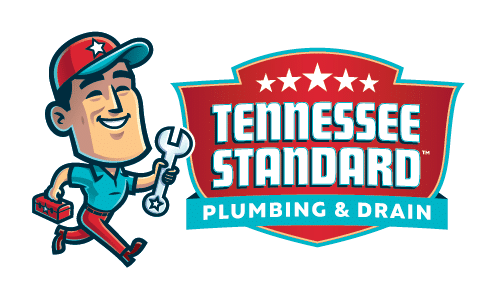Are you having issues with some or all of the pipes in your home producing a whistling sound when you use your plumbing? This issue is somewhat common and can happen for several reasons. While it often isn’t a serious problem, it can sometimes be a sign that you need to have a section or have your home’s pipes replaced. We’ll look at why the whistling sound happens, what issues can cause it and what you can do to overcome them.
Why Pipes Sometimes Whistle
A faulty or partially closed valve can cause water to flow unevenly, resulting in screeching or whistling noises.
Solution:
- Inspect and Replace Valves
- Turn off the water supply and check for worn or damaged valves.
- Tighten Loose Washers: In some cases, simply tightening a washer can eliminate the noise.
Common Reasons Why Water Pipes Make Whistling Noises
1. Worn-out or Clogged Valve
If the whistling sound only occurs when using one faucet or shower, it often means there is an issue with either the seal valve inside the faucet or the shower or a shut-off valve. Kitchen and bathroom faucets typically have three separate valves. There are shut-off valves on both the cold and hot water lines as well as a seal valve inside the faucet.
As the seal valve inside the faucet wears out, it, sometimes, ends up not opening fully when you turn the water on. Any of the valves can also get clogged with mineral deposits that can prevent them from opening all the way. No matter what, the end result is that the water must flow through a smaller opening than usual when the valve is fully open.
In certain cases, a plumber has the ability to resolve a clogged valve issue by simply removing the valve and thoroughly cleaning it. If the seal valve is worn out, they’ll need to take apart the faucet and repair it. Depending on the age and condition of the faucet, sometimes, you’re better off just replacing the faucet.
If you hear a whistling sound when using any plumbing fixture, the issue is usually related to either the shut-off valve or the pressure-regulating valve on your main water line. Here, the solution is again to have a plumber clean, repair or replace whichever valve isn’t working as it should.
2. Clogged Faucet Aerator
Most kitchen and bathroom faucets have an aerator, which is just a screen that is screwed onto the end of the faucet. The purpose of a faucet aerator is to control the stream of water so that it flows evenly and also to reduce the flow so that the faucet doesn’t waste water. Over time, the screen ends up getting clogged with mineral deposits and silt. A clogged aerator can also end up restricting the water flow to where the faucet makes a whistling sound.
Checking and cleaning a clogged aerator is usually something you can do yourself. However, you’ll need to use pliers to unscrew the aerator from the end of the faucet. If you’re not careful, you could end up damaging or even breaking the faucet. Soak the aerator in vinegar for 20 minutes to loosen mineral deposits, and then, scrub with a soft-bristled brush. We also offer drain service, too!
3. Aging Plumbing
Whistling sounds are quite common in older homes that haven’t had their original plumbing updated and all the water lines replaced. In the past, it was common to use galvanized steel or even lead pipes for the water lines in a home. Copper pipes are resistant to corrosion, but other metal pipes do rust and corrode. As rust builds up inside old pipes, it leads to the interior diameter of the pipe shrinking and causing a restriction in water flow. Re-pipe your home with copper or PEX if you have galvanized or lead pipes.
Another issue with older plumbing systems is that mineral deposits also build up inside the water lines and end up restricting the water flow. Here, the only effective solution is again to replace the water lines. If you have hard water in your home, it’s highly recommended that you install a water softener. By doing so, you can effectively prevent the accumulation of mineral deposits in your pipes, plumbing fixtures, and appliances.
Hearing loud banging or knocking sounds coming from your pipes? This issue, commonly known as a water hammer, can indicate potential plumbing problems that, if left unchecked, may lead to leaks or pipe damage.
What Is a Water Hammer?
A water hammer occurs when water flow is abruptly stopped, causing sudden pressure changes that make pipes vibrate and knock against surrounding structures. This issue often results in loud banging sounds coming from inside your walls, floors, or ceilings.
Common Causes Pipes to Make a Banging Sound?
1. Loose Pipes
- Pipes should be securely fastened to wall studs or floor joists.
- If a pipe comes loose, it can knock against surrounding materials.
- A plumber may need to access the pipe and re-secure it with brackets or fasteners.
2. High Water Pressure
- Excessive water pressure causes pipes to shake and vibrate when shutting off a fixture.
- Signs of high water pressure include:
- Loud banging or knocking sounds when water stops flowing.
- Faucets or showerheads that spray erratically.
- Appliance malfunctions, such as dishwashers or washing machines making unusual noises.
- A pressure-reducing valve (PRV) can help regulate water pressure.
3. Water Changing Direction Abruptly
- When water flow stops suddenly, pressure builds up and forces pipes to shudder.
- This is most common when turning off:
- Faucets
- Showers
- Washing machines
- Dishwashers
4. Worn or Faulty Pipe Connections
- Over time, pipe connections and fittings can weaken.
- Vibrations caused by a water hammer can eventually lead to:
- Leaks
- Pipe bursts
- Damage to surrounding structures
Why You Shouldn’t Ignore a Water Hammer
Ignoring banging pipes can lead to serious plumbing issues, including:
✅ Leaks: Constant vibrations weaken pipe joints, increasing the risk of leaks.
✅ Higher Utility Bills: Undetected leaks can lead to increased water waste.
✅ Structural Damage: Persistent banging can wear down wall studs, joists, and ceiling supports.
How to Fix a Water Hammer
🔧 Secure Loose Pipes: A plumber can add brackets or straps to stabilize the pipes.
🔧 Install a Water Hammer Arrestor: These devices absorb shockwaves and reduce vibrations.
🔧 Adjust Water Pressure: A professional can install a pressure-reducing valve (PRV) to lower excessive pressure.
As the most trusted plumbing company in the Greater Knoxville area, you can count on Tennessee Standard Plumbing for all of your repair and installation needs. We offer flexible scheduling and will always arrive at the appointed time. We’ll also send you a message 30 minutes before with a picture of which one of our licensed plumbers is on their way. After evaluating your plumbing, we’ll also give you a range of options so that you’re not forced to pay for something that’s out of your budget. No matter what plumbing service you need, contact us today to schedule an inspection or service call.



